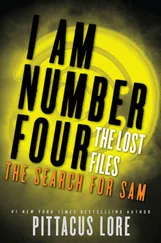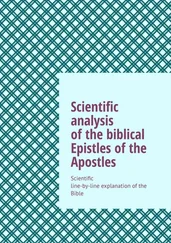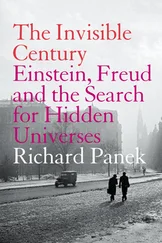Editing these lectures afforded me, for precious moments at a time, the happy delusion that I was working with Carl once again. The words he spoke in these lectures would sound in my head and it felt wonderfully as if we had somehow been transported back to the two heavenly decades when we thought and wrote together.
We had the pleasure of writing several of our projects, the Cosmos television series among them, with the astronomer Steven Soter, our dear friend. Since Carl's death Steve and I wrote the first two planetarium shows for the magnificent Rose Center at the American Museum of Natural History in New York City. Once I had turned Carl's Gifford Lectures into a book, I invited Steve to join me in editing the final drafts. We felt sure that Carl would not have wanted us to use the 1985 slides from the lectures. Astronomers have seen farther and more clearly since then. Steve found the gorgeous images that replace them. He also wrote the scientific updates that appear in the footnotes. I am grateful to him for his many editorial contributions to this book.
Ann Godoff has been our editor ever since Shadows of Forgotten Ancestors, Carl's favorite among all the books he and we ever wrote. She also edited Carl's Pale Blue Dot, The Demon-Haunted World, and Billions & Billions. It was her recognition that the Gifford Lectures should become a book that made The Varieties of Scientific Experience possible. Her imagination and wit made the process of that transformation a pleasure. I thank her colleagues at the Penguin Press, art director Claire Vaccaro, and Ann's assistant Liza Darnton for all they did for the book and for me. I am grateful to Maureen Sugden for her meticulous and thoughtful copyediting.
Jonathan Cott has always been a North Star to me, guiding me to every possible kind of great cultural experience. I am further indebted to him for the valuable editorial comments and suggestions he gave me for this book.
I thank Sloan Harris of ICM, for his excellent representation and his consistent commitment to my work, and Katharine Cluverius, in his office, for her kind assistance.
Kristin Albro and Pam Abbey in my office at Cosmos Studios have provided valuable administrative support, and Janet Rice helped in a host of ways, making it possible for me to focus on this work.
I wish to acknowledge the encouragement and loving kindness of Harry Druyan, Cari Sagan Greene, Les Druyan and Viky Rojas-Druyan, Nick and Clinnette Minnis Sagan, Sasha Sagan, Sam Sagan, Kathy Crane-Trentalancia, and Nancy Palmer.
Carl's Gifford Lectures were expertly transcribed from audiotapes long ago by Shirley Arden, his executive assistant at the time. As I read the transcripts, which were done without the text-processing magic of today's computer technology I felt a renewed sense of respect for her consistently meticulous work.
I would also like to thank the organizers of the Gifford Lectures and the University of Glasgow for their kind invitation to Carl and their hospitality to us during our time in Scotland.
In the ten years since Carl's death, these lectures sat in one of the thousand drawers of his vast archives. For some reason the Gifford Lectures were never logged into the archives' otherwise reliably comprehensive index. In the midst of a worldwide pandemic of extreme fundamentalist violence and during a time in the United States when phony piety in public life reached a new low and the critical separation of church and state and public classroom were dangerously eroded, I felt that Carl's perspective on these questions was needed more than ever. I searched in vain for the transcripts. Our friend, who wishes to remain anonymous, succeeded where I had failed. My gratitude to him for this, and much else, is profound.
• Ann Druyan Ithaca, New York March 21, 2006
Jacket
A 2004 image of Comet NEAT made by the Gunma Observatory of Japan. Every little red/green/blue dash is the spectral trace of a star.
Frontispiece: Hubble Ultra-Deep Field
In 2004 the Hubble Space Telescope looked at a small piece of sky (a tenth the size of the full Moon) for eleven days to make this image of nearly ten thousand galaxies. Light from the most distant galaxies took almost thirteen billion years to travel the distance to Hubble's lens. Each galaxy contains many billions of stars, each star a potential sun to perhaps a dozen worlds.
Science lifts the curtain on a tiny piece of night and finds ten thousand galaxies hidden there. How many stories, how many ways of being in the universe are contained therein? All residing in what, to us, had been just a little patch of empty sky.
Figure 1.Eagle Nebula
A stellar nursery located about 6,500 light-years away from us. Through a window in a dark enveloping shell of interstellar dust, we see a cluster of brilliant newborn stars. Their intense blue light has sculpted filaments and walls of gas and dust, clearing and illuminating a cavity in a cloud about 20 light-years across.
Figure 2.Crab Nebula
This is the remnant of the same exploded star, or supernova, that Chinese and Native American Anasazi astronomers observed in the constellation Taurus in A.D. 1054. They recorded the sudden appearance of a brilliant new star that then slowly faded from view. The filaments are the unraveling debris of the star, enriched in heavy elements produced by the explosion.
Figure 3.Sun and Planets
Here in their order and relative sizes are the Sun (at left), the four terrestrial planets (Mercury, Venus, Earth, Mars), the four gas giant planets (Jupiter, Saturn, Uranus, Neptune), and Pluto (far right).
Figure 4.Wright Solar System and Sirius
The top shows to scale the Sun (left) and the orbit of Mercury (right). The middle shows the entire solar system with the orbit of Saturn (S) and several elliptical comet orbits (left) and the system of the bright star Sirius (right). The bottom shows from left to right the orbits of Saturn, Jupiter, Mars, Earth, Venus, Mercury, and the Sun.
Figure 5.Solar System Scales
Upper left The orbits of the inner planets Mercury, Venus, Earth, and Mars, the asteroid belt, and the orbit of Jupiter.
Upper right: The scale increases tenfold to encompass the larger orbits of all the gas giant planets Jupiter, Saturn, Uranus, and Neptune, and the elliptical orbit of Pluto.
Lower right: A further scale change compresses the orbits of all the planets into the box at one end of the highly elliptical orbit of a comet.
Lower left: The scale increases again so that the cometary orbit is now in the tiny box at the center and we see the inner portion of the Oort Cloud of comets.
Figure 6.Oort Cloud
Schematic view shows the vast spherical cloud of perhaps a trillion comets, weakly bound by the gravity of the Sun (center). It was named after the Dutch astronomer Jan Oort, who correctly hypothesized its existence in 1950.
Figure 7.Wright: Other Systems
Wright imagined that our own solar system was but one of a countless number of similar systems in the Milky Way, each perhaps containing a star surrounded by its own retinue of planets and comets.
Figure 8.The Pleiades Star Cluster
The bright stars in this cluster illuminate the faint remnants of the interstellar cloud from which they formed. This star cluster, a naked eye object in the constellation Taurus, is about 15 light-years across.
Figure 9.Orion Nebula
A vast cloud of glowing interstellar gas and opaque dust, which is giving birth to dozens of new stars. The nebula is about 40 light-years across and 1,500 light-years away. If you look up at the constellation Orion on a winter night, this stellar nursery appears as the hazy central "star" in his sword.
Читать дальше










